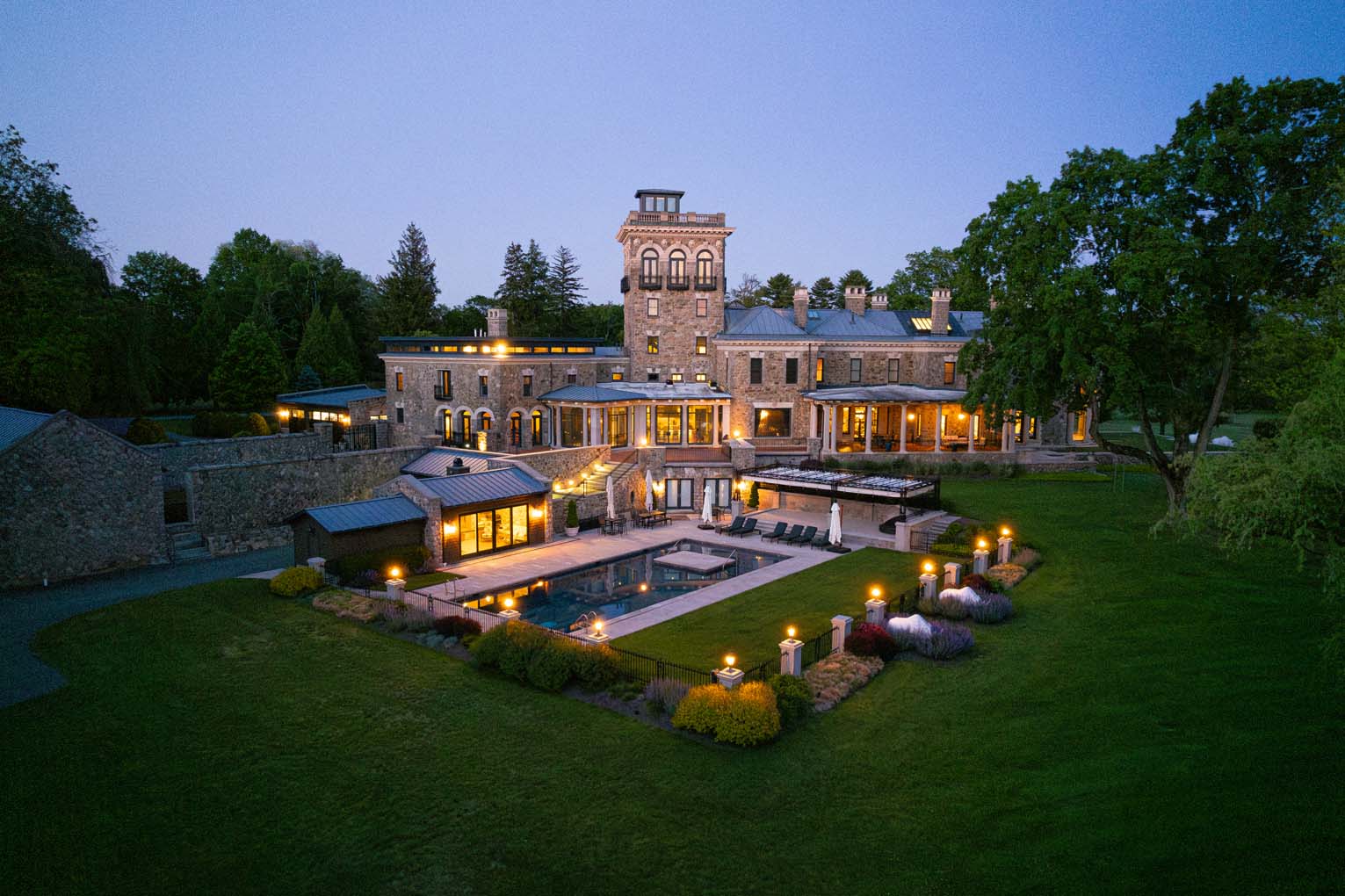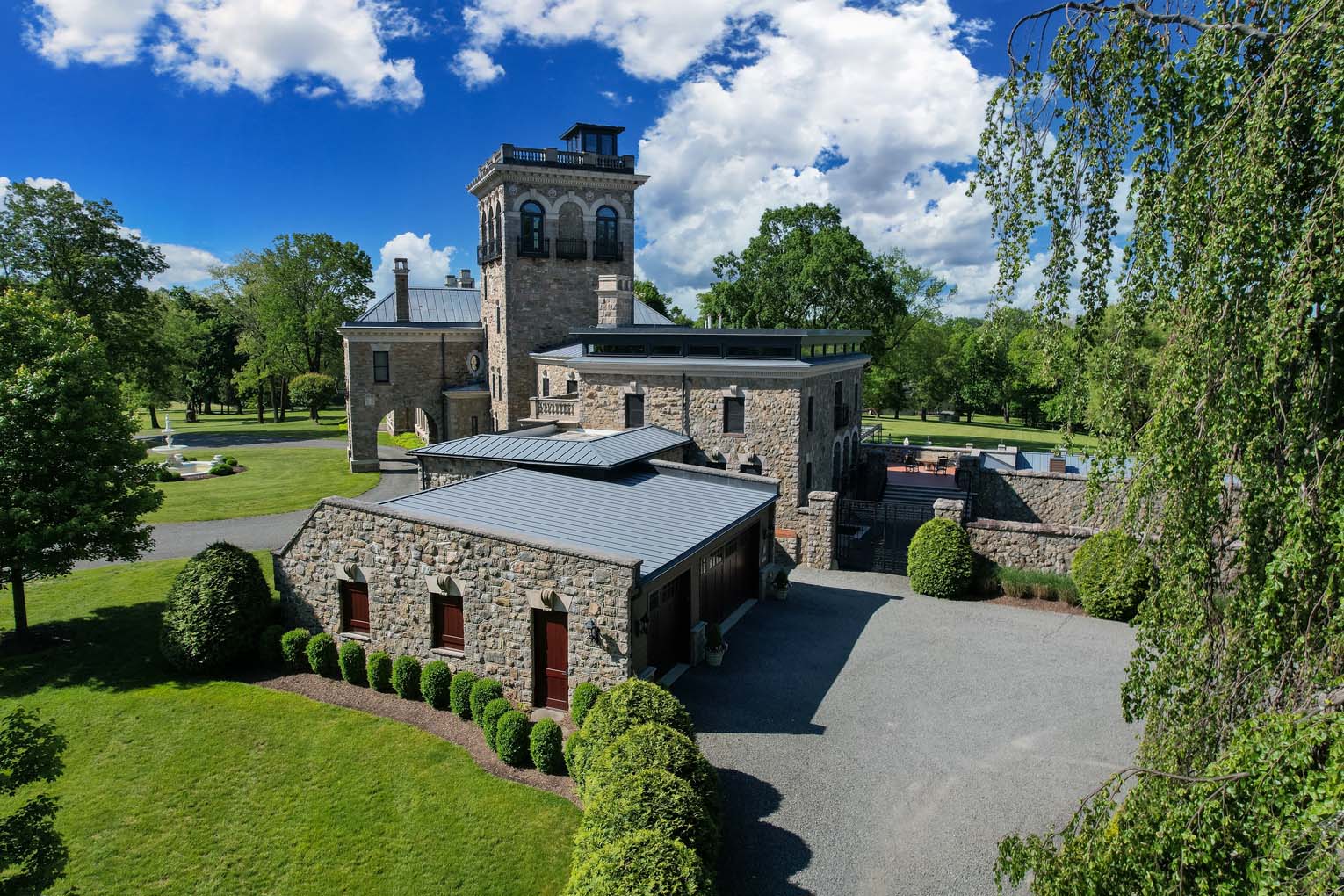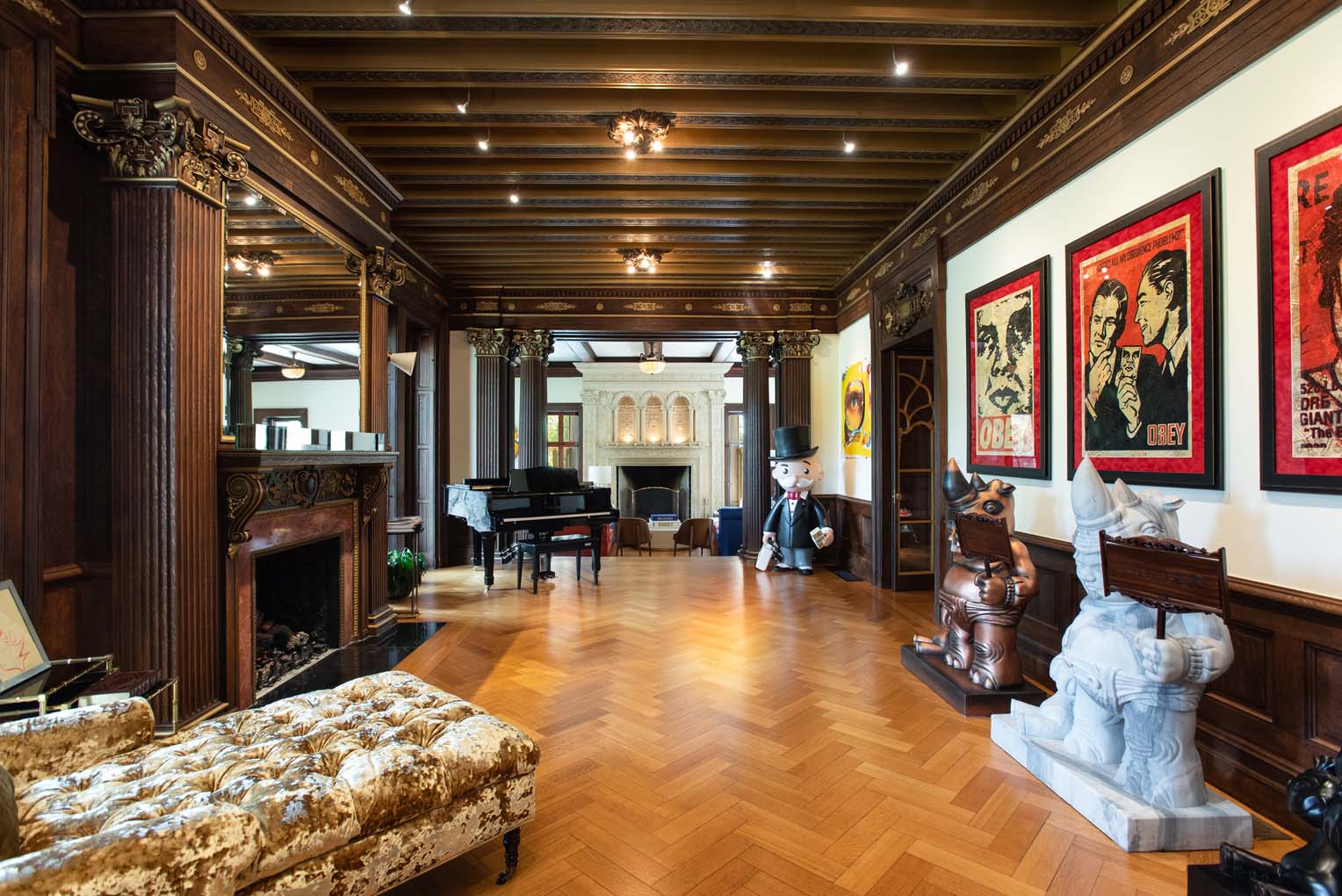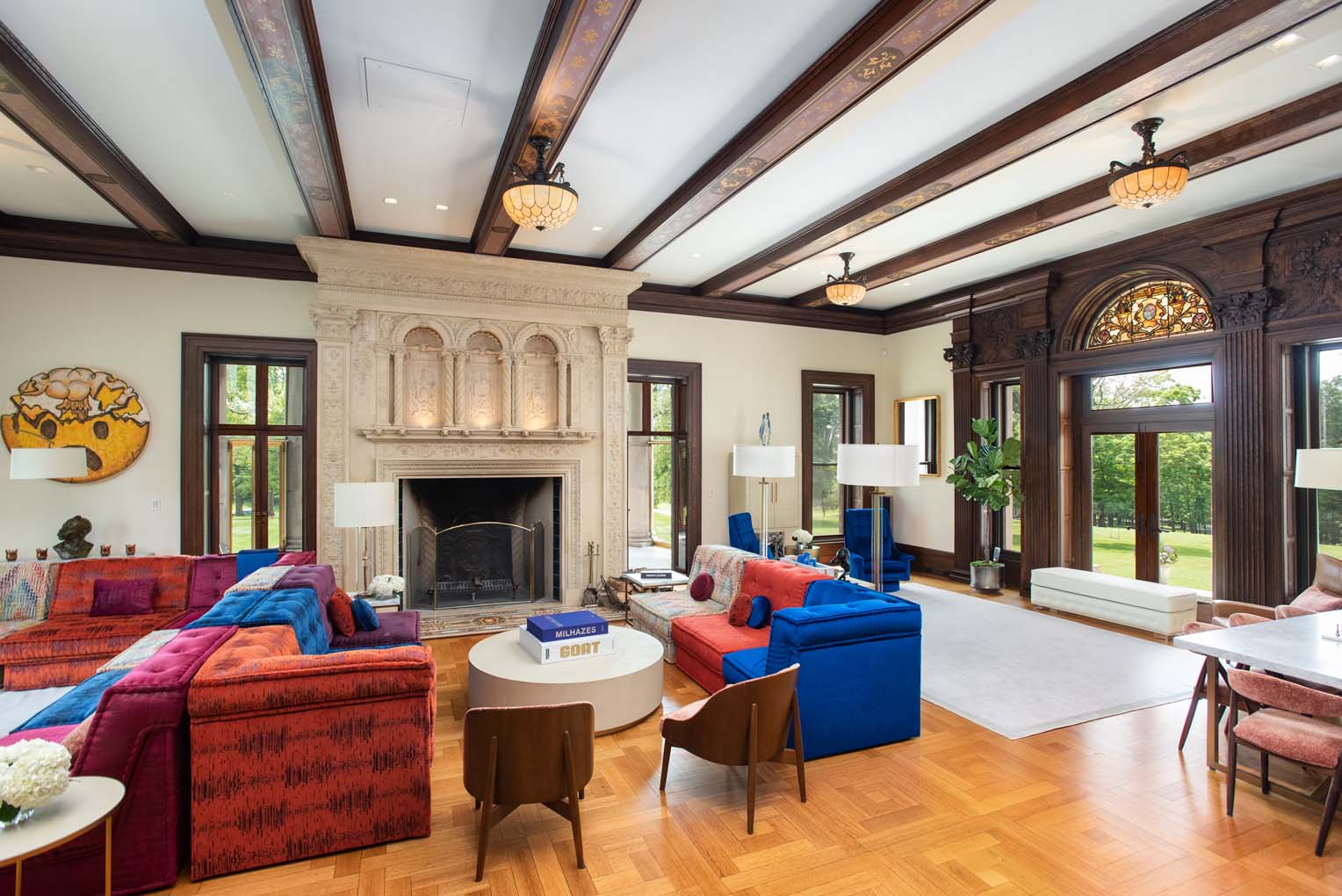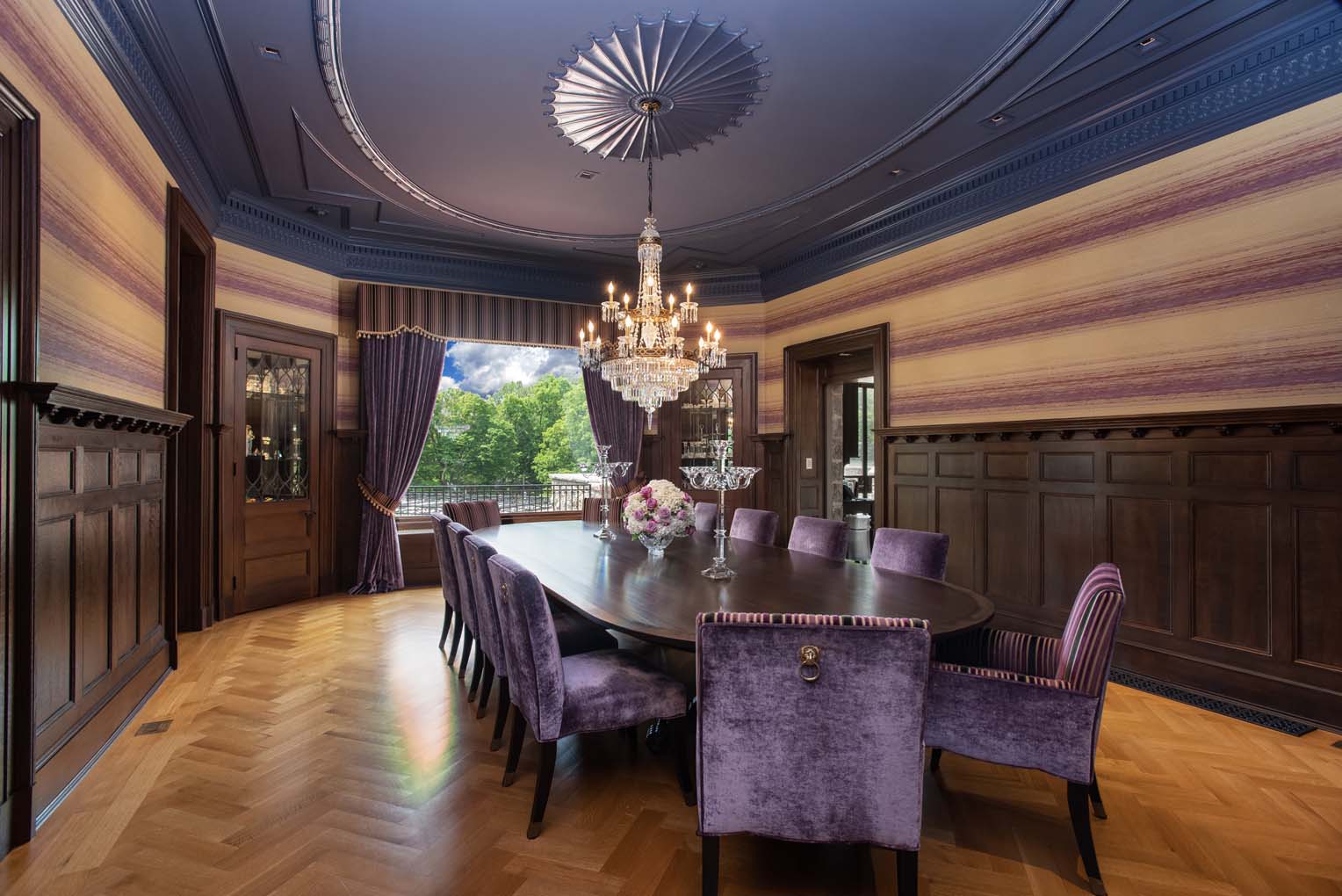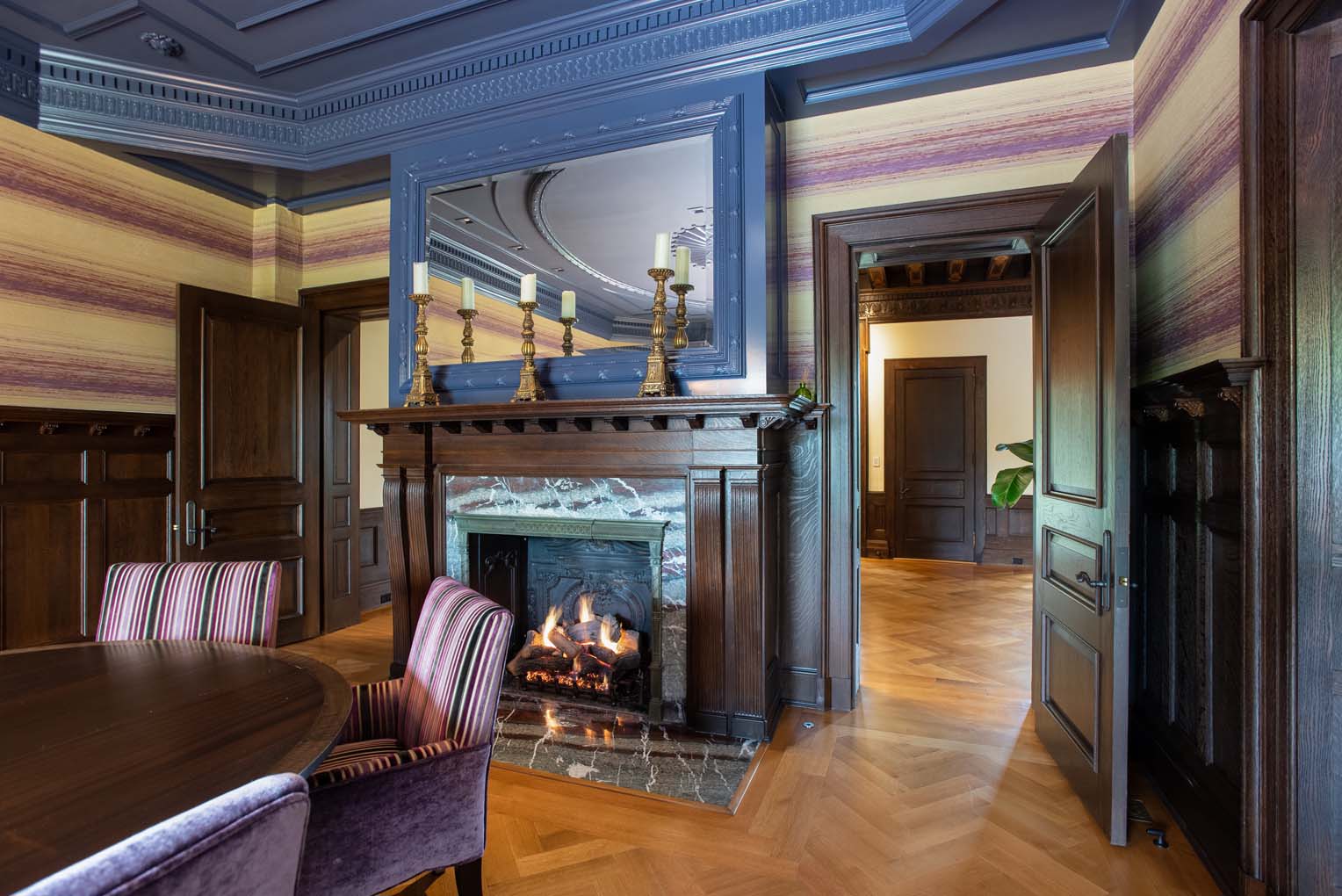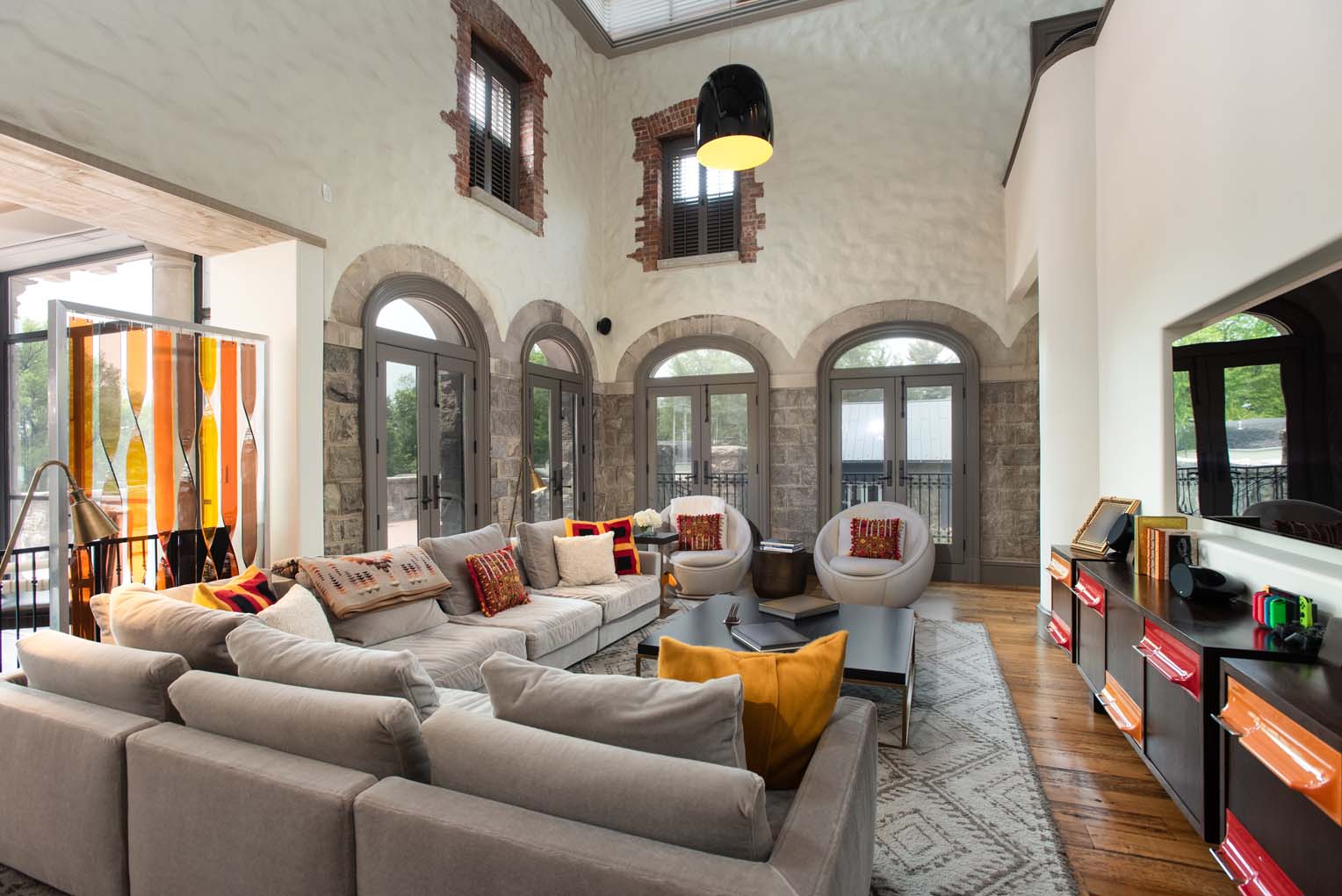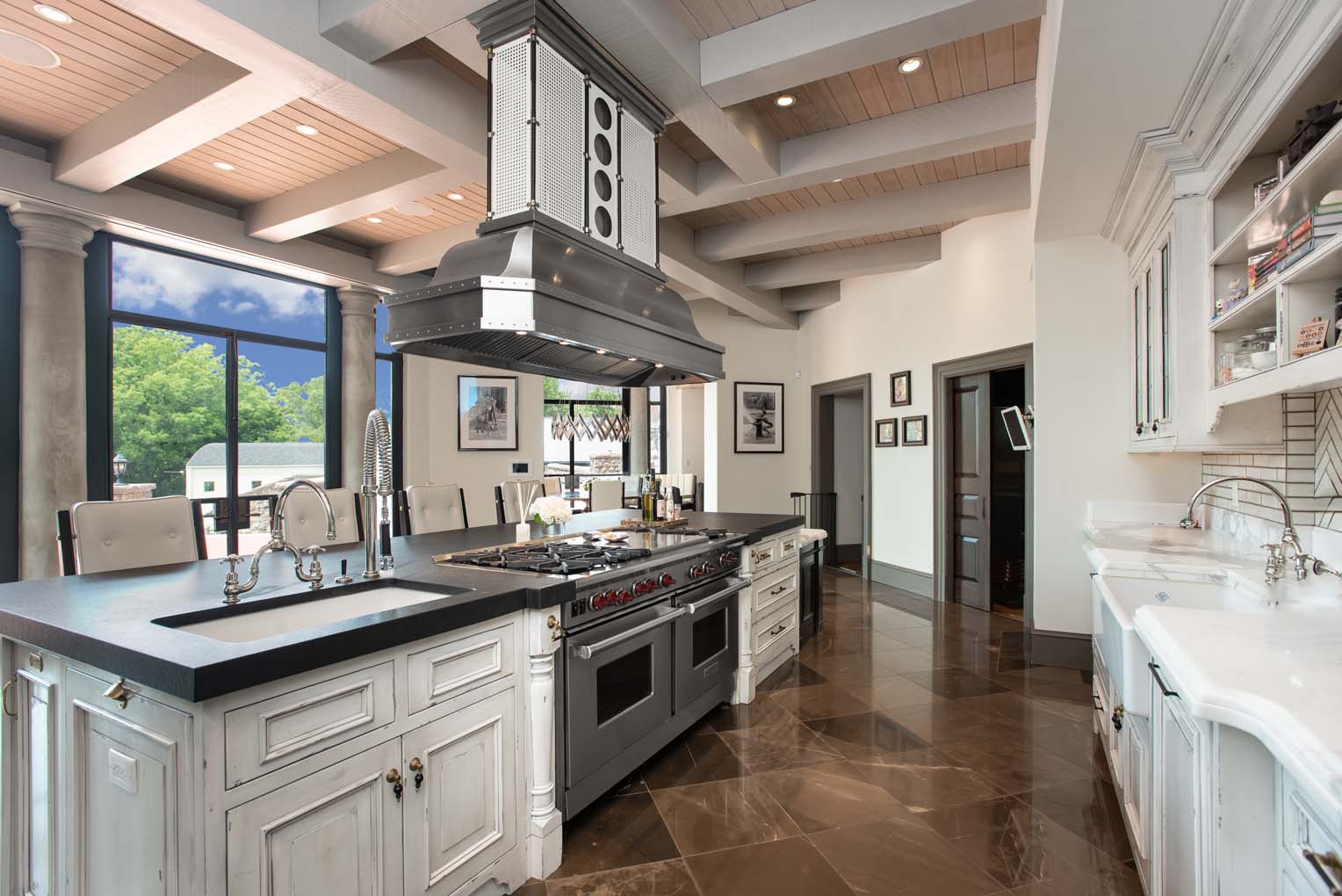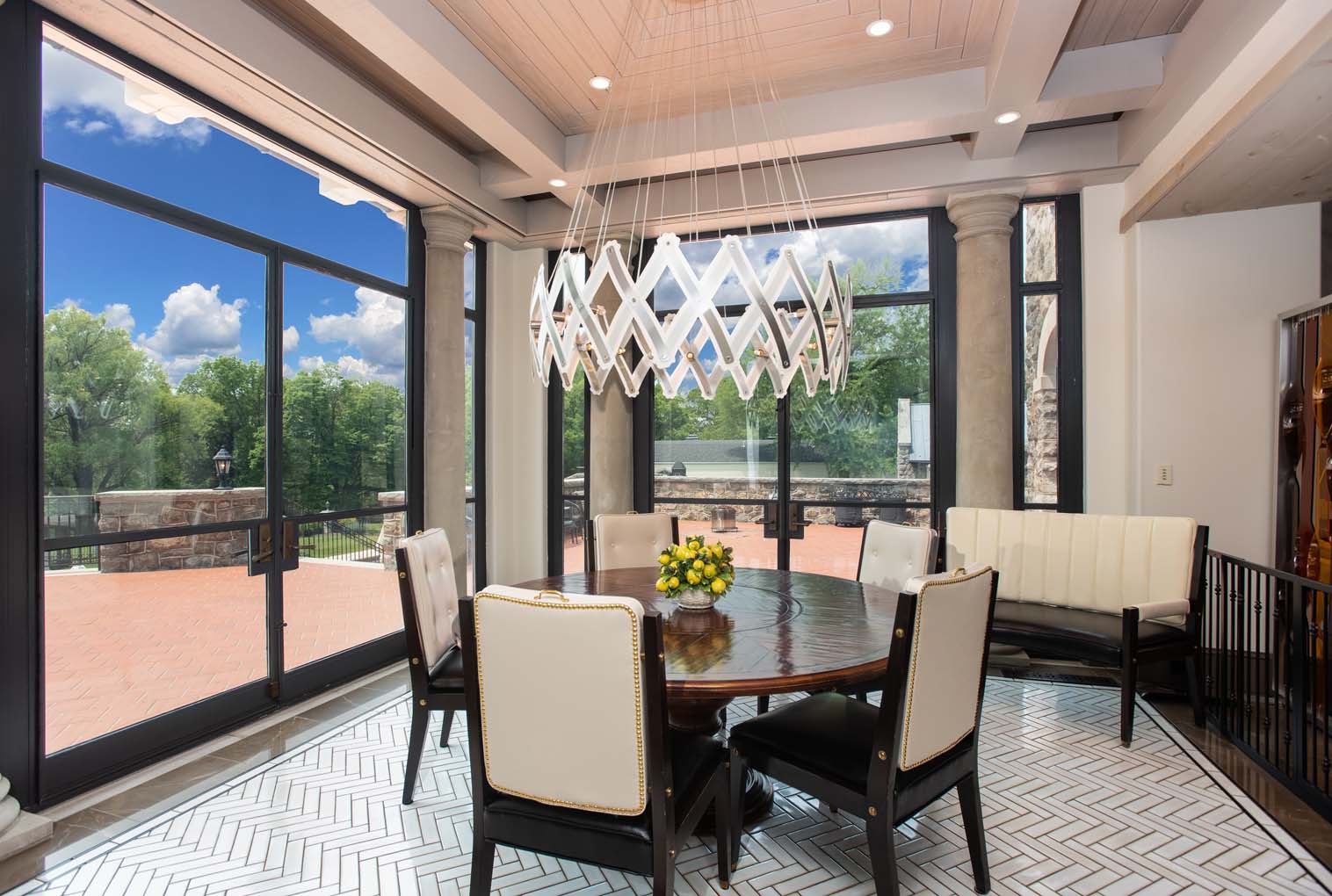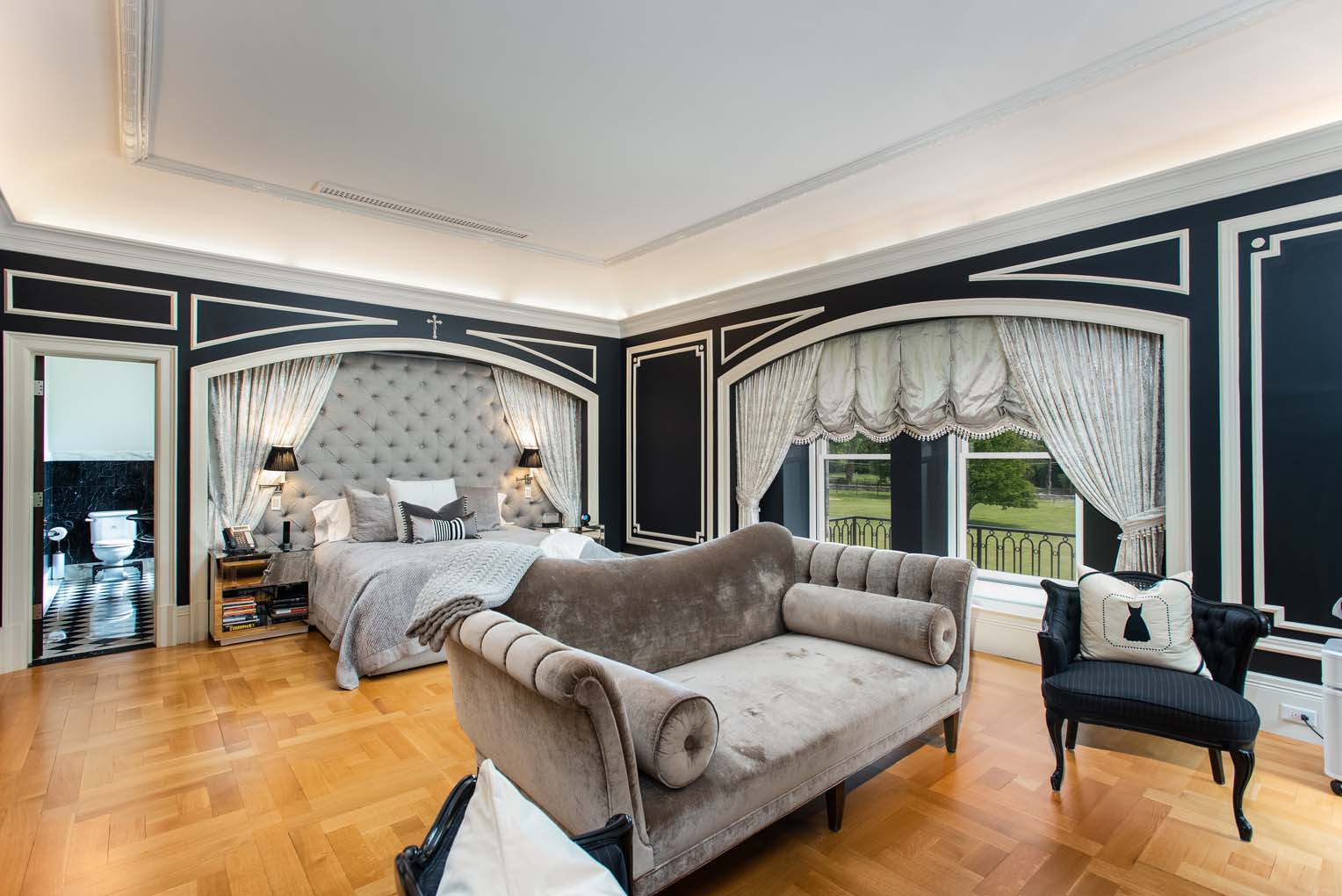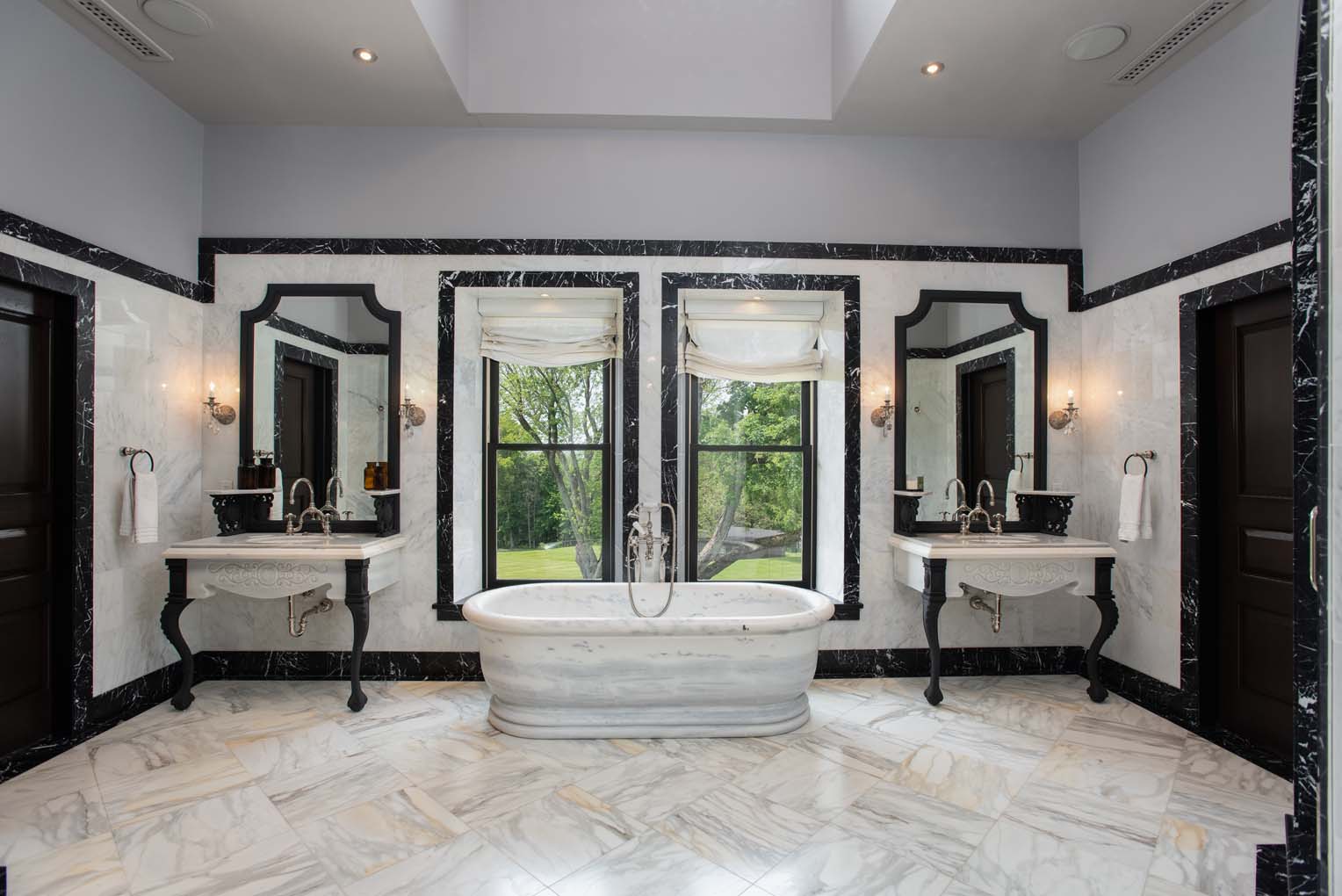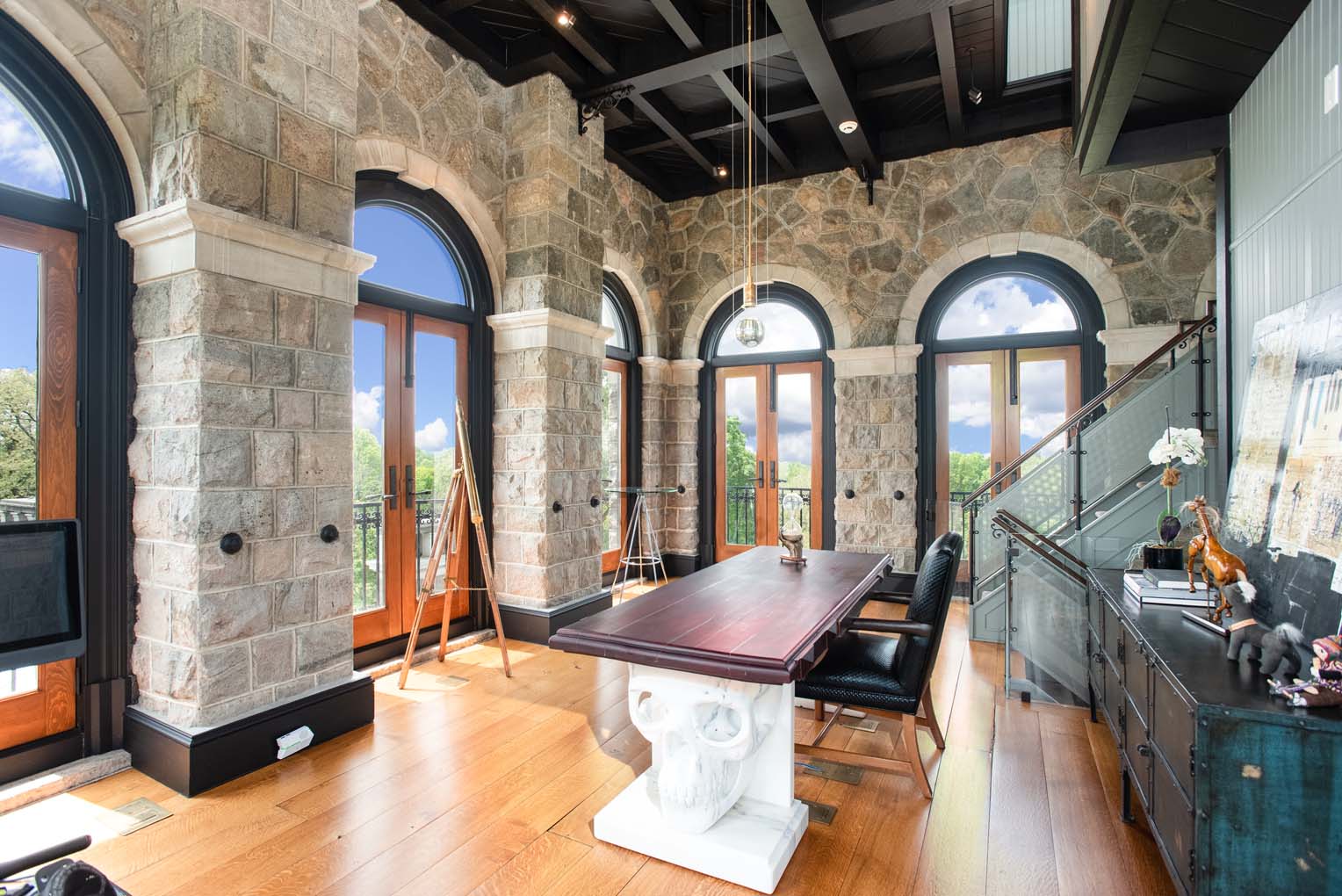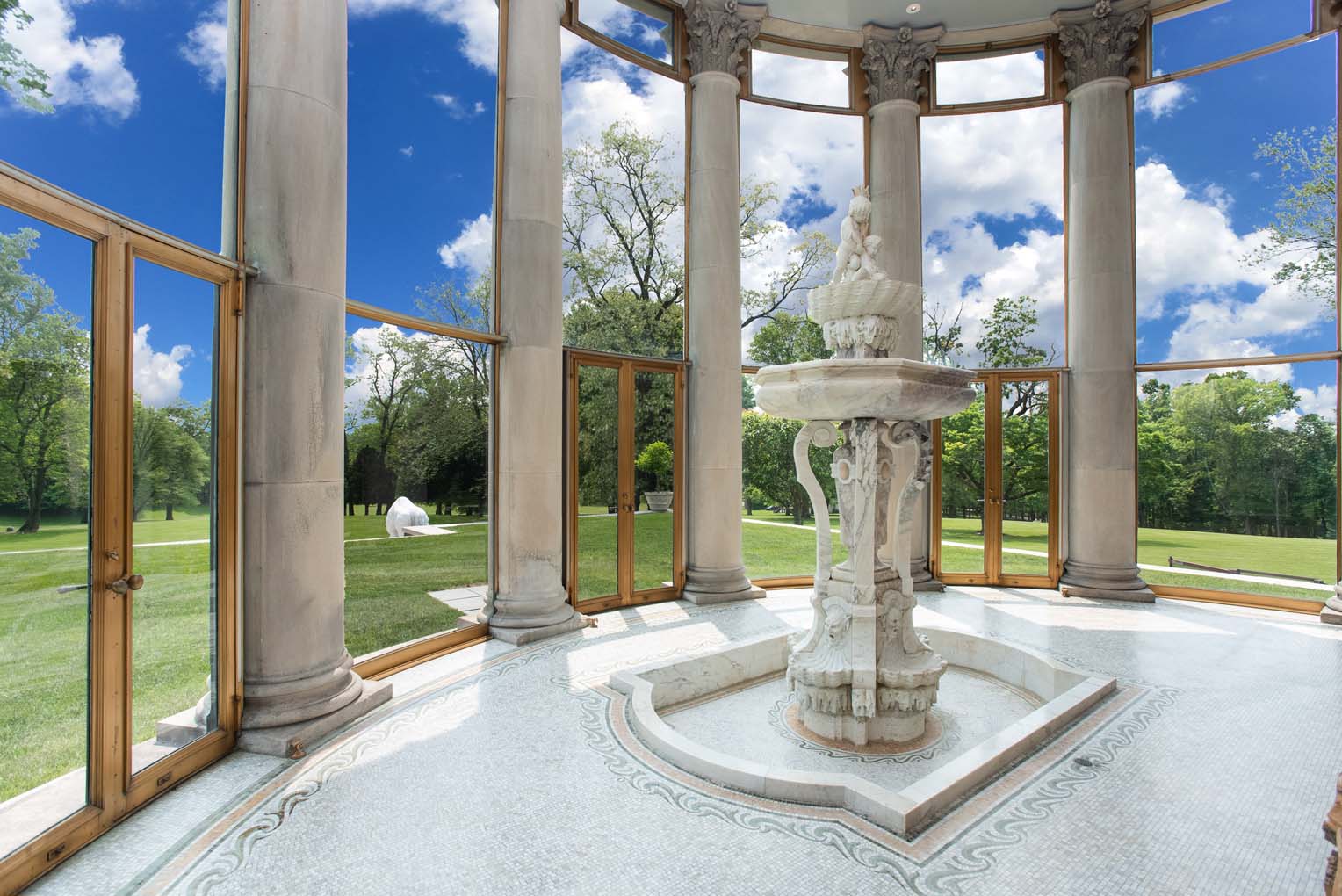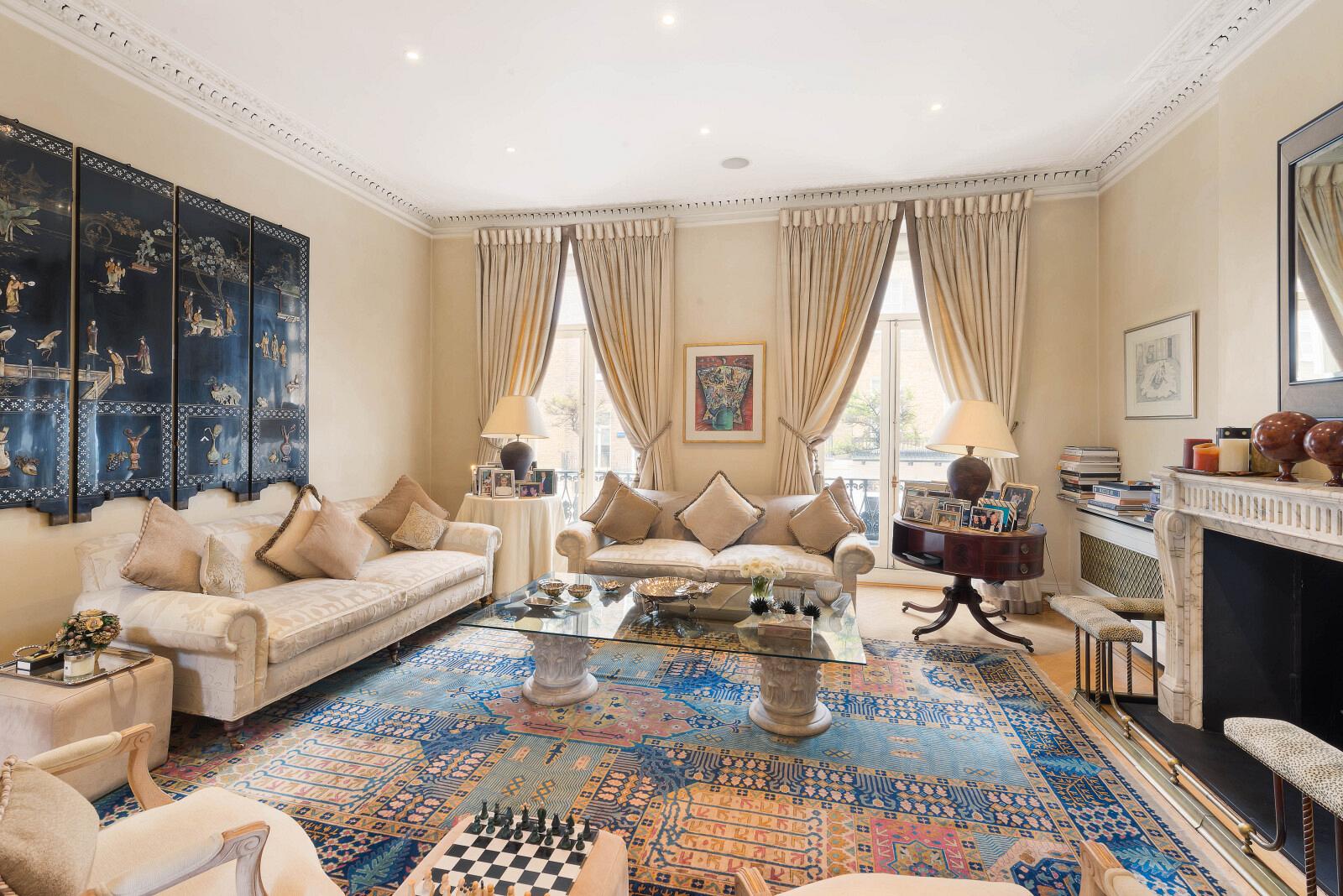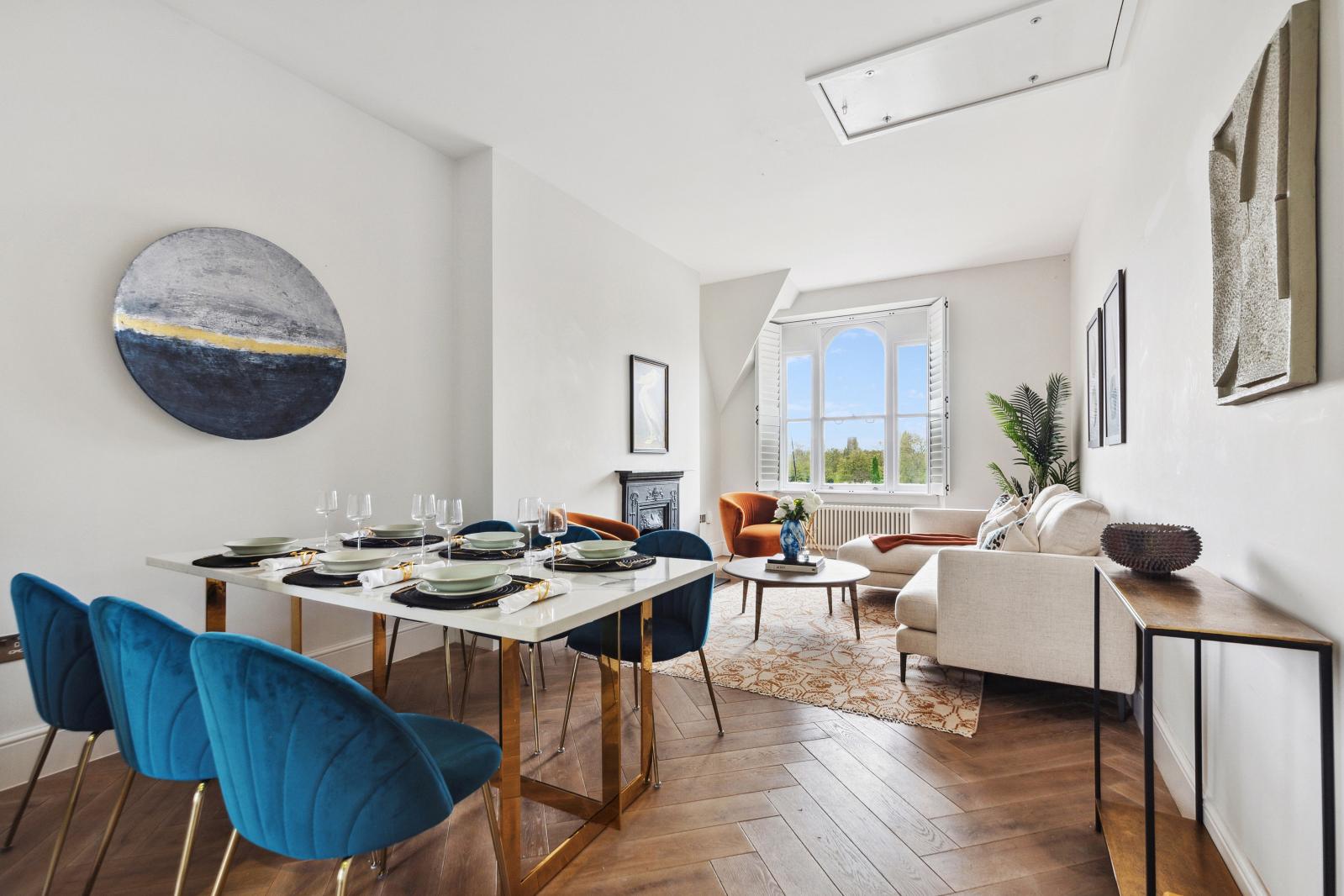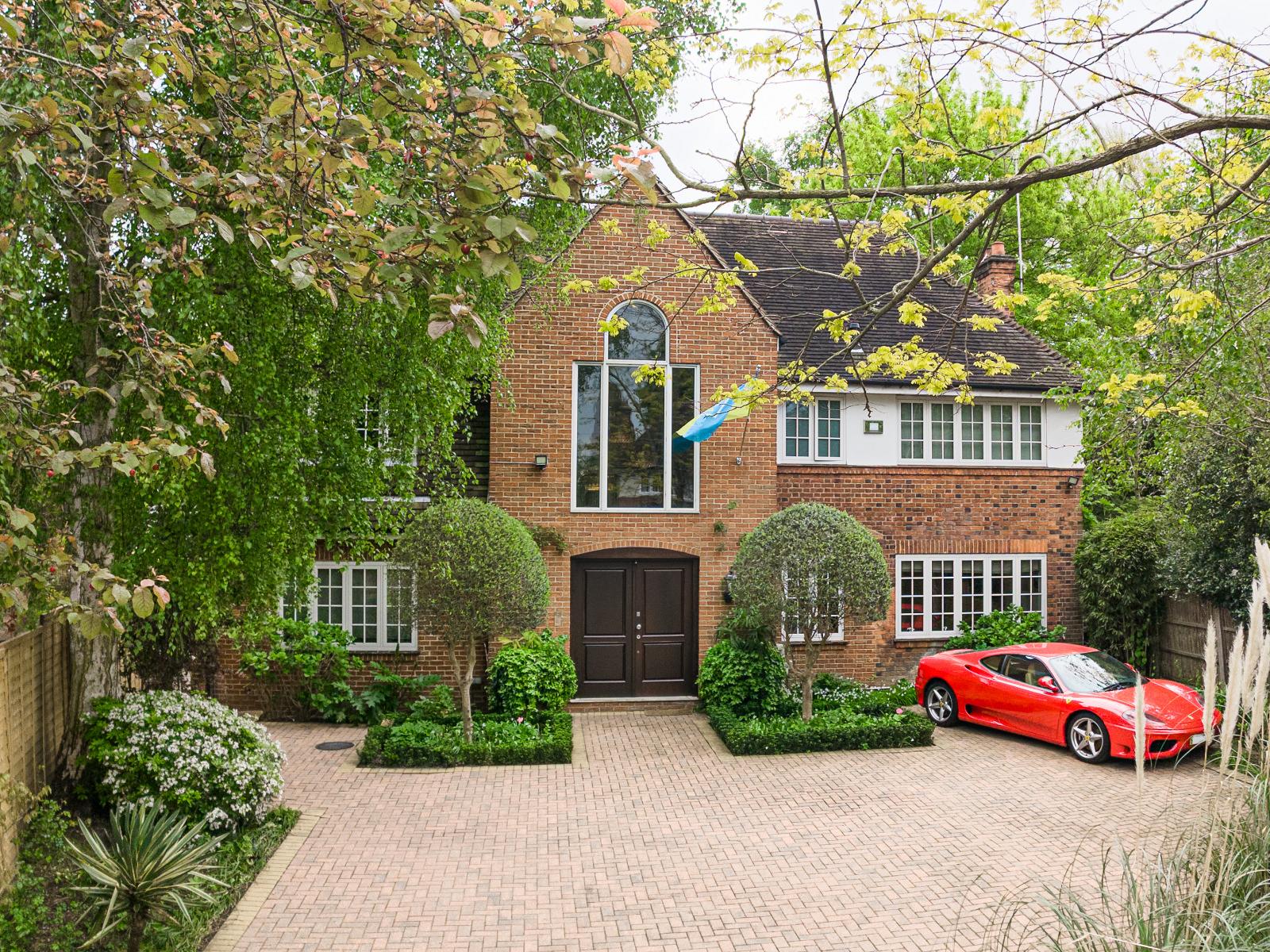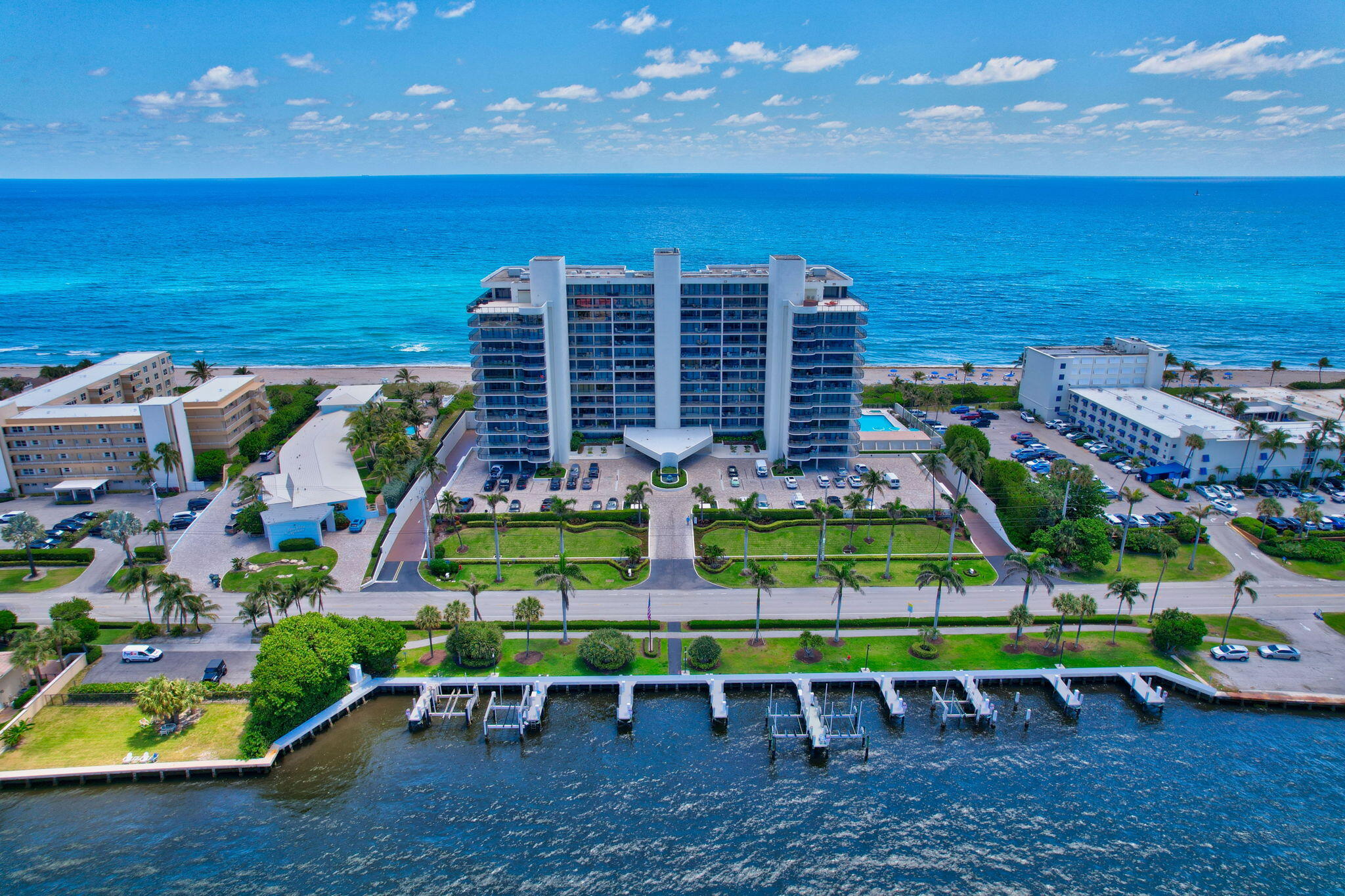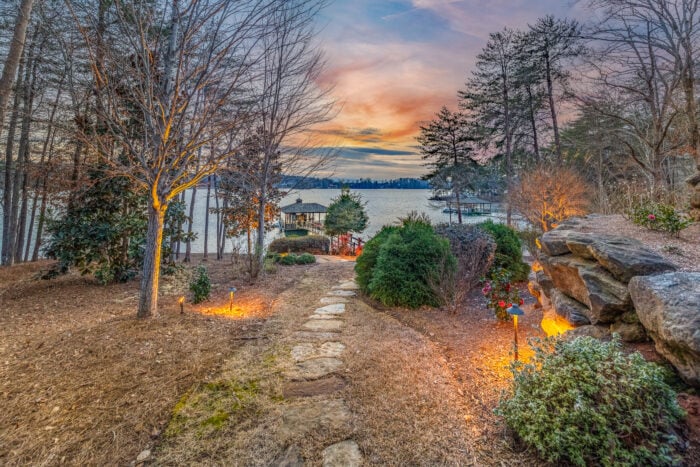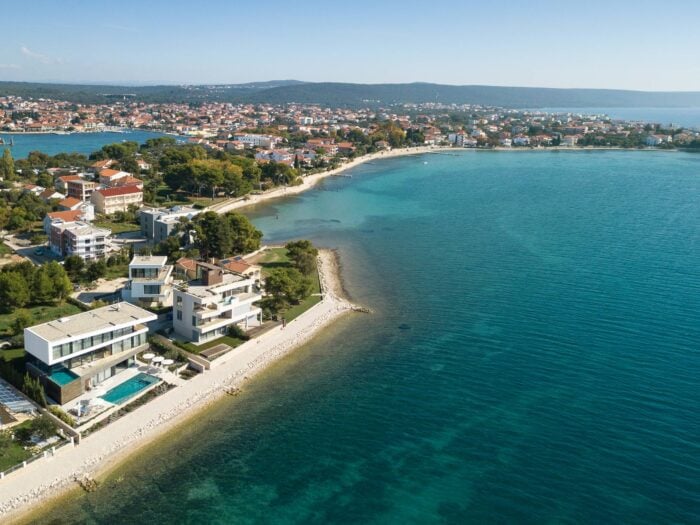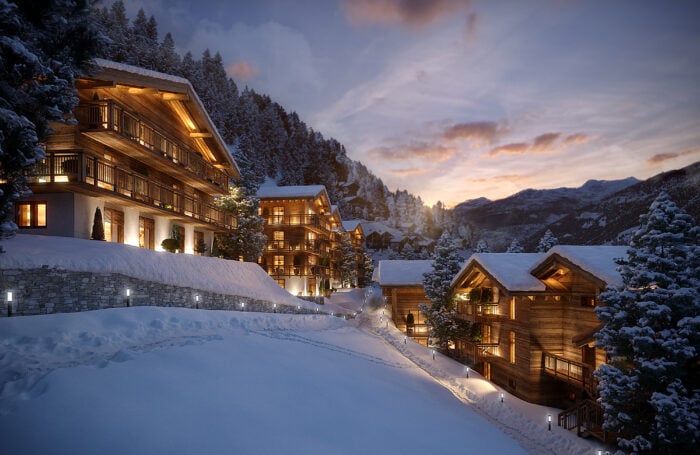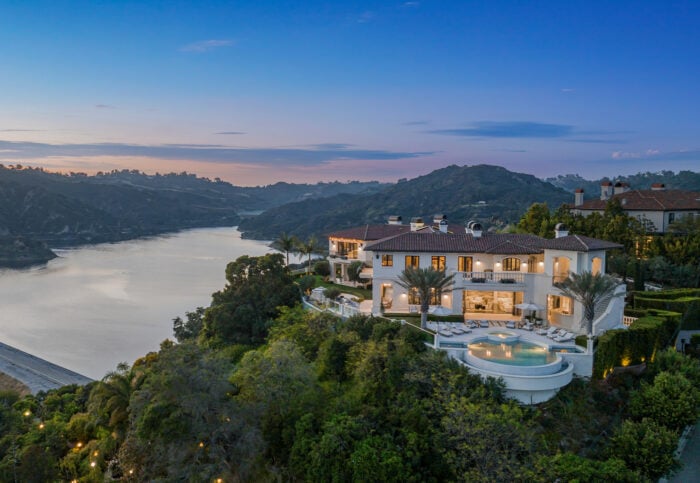After turning $5,000 in seed money into a billion-dollar empire, buying a Gilded Age estate named Stronghold seemed the right move for fashion mogul Marc Eckō. The wunderkind, a former graffiti artist and pharmacy school dropout, purchased the Bernardsville, New Jersey, castle in 2005.
The 20,000-square-foot stone manse and tower looked as formidable as the company its new owner founded in 1993: the streetwear brand Eckō Unltd. The property, built in 1886 for a member of the Astor family and once owned by John F. Dryden, a founder of the Prudential Insurance Co., now was in the hands of a 33-year-old steeped in hip-hop, graffiti, and skateboard culture.
And because the 22-room home had been completely gutted, Eckō eyed it like a painter itching to fill a canvas. “I was instantly seduced,” Eckō says of his initial walk through the cavernous shell strung with construction lights. “And in fear and shock―this would be a different kind of challenge.”
The villa is faced with locally mined rough-faced stone and is lined with columns set with Corinthian and Ionic capitals. The property has seven fireplaces, Tiffany glass, impressive carved wood details, front and rear terraces, and a three-bedroom carriage house with a separate entrance on a dedicated 10-acre lot. There’s also a gymnasium with a full-size basketball court, a pool, and a cedar-sided pool house.
Eckō balanced disparate elements when rejuvenating the seven-bedroom home built for New York banker James Coleman Drayton and his wife, the former Charlotte Augusta Astor (their 1879 marriage created a spectacular splash outdone only by their scandalous split that nearly resulted in a duel). Eckō wanted to retain what he calls the villa’s “grandiose charm” while adding dashes of “minimalist modernity.”
He also wanted to marry his own daring vision with that of the home’s famed architect, George Browne Post (1837-1913), whose novel New York City buildings―they reached 20 stories―were precursors to modern skyscrapers. Post’s standout designs included the New York Stock Exchange, the New York Times building, and the Wisconsin State Capitol.
In order to understand the property’s strengths and potential, Eckō spent the first year of ownership “listening” to the home as workers stripped away its rotted interior. He vowed to restore details such as the exquisite millwork and not turn the baronial home into “a showroom at a furniture store” he says. Contemporary artworks had to appear as if they had long existed in the house.
Taking a cue from Post’s fondness for verticality, Eckō tore out a staircase that greeted guests when entering the home’s striking double door faced with a brass grill outlining 48 panels with quatrefoil designs. He punched a hole in the ceiling to create a rotunda, its dome painted with a whimsical mural created by artists Chris and David Faust.
The aesthetic choice, one that evokes wonder, also was practical. “Now I could call upstairs to the kids,” Eckō says. “Otherwise, how would they hear me?”
“It all felt a little claustrophobic,” adds Eckō of the home’s original entry. “Almost half of the gallery entry was eaten up architecturally by those stairs.” He repositioned the staircase nearby, re-creating its scores of barley twist spindles. He hung a crystal globe chandelier in the stairwell―reminiscent of the Times Square New Year’s Eve Ball––that adds a bright drop of modernity to the dark staircase railing.
Architect Alan Wanzenberg and designer Oliver N. Carter along with numerous artisans helped Eckō steer the renovation.
About 90% of the home is graced with original quarter-sawn oak, prized for its stability and vibrant grain. The extensive carved millwork, ornate gilding, and elegant stenciled beams were in decay and, with great effort, restored. The wainscoting, also restored, and the parquet and herringbone floors are original.
The parlor’s floor-to-ceiling carved limestone fireplace was rehabilitated, first scrubbed of scribbling by students attending Miss Gill’s School, which purchased the estate in 1940 and sold it in 1995 long after the school had moved and merged to become Gill St. Bernard’s.
Stronghold’s primary bedroom suite now features a black and white palette inspired by old Hollywood and the chic savoir-faire of turn-of-the-century New York. Eckō designed custom carved components such as a marble fireplace mantle that mimics a stylish swag of fabric. Other materials include Calacatta gold marble tiles and classic black marble.
The primary bath includes cut-glass flourishes, custom vanities with framed mirrors edged in beaded molding, dual showers with a steam sauna, and a freestanding bathtub carved from a single block of marble. The result is as if the space’s original design had been restored. The home has eight full baths and five half baths.
The home’s five-story tower presented a puzzle of “little odd-shaped rooms,” Eckō says. He again drew inspiration from the home’s genius architect and his unprecedented vertical creations. He graced the tower with a new sense of elevation by installing stairs with cast steel spindles paired with sheet-cut steel painted for an industrial look.
Eckō envisioned the stairs as a “thrill ride at the turn-of-the-century World’s Fair” that leads climbers to discover the wonders above. The tower’s third floor was transformed into a speakeasy-style lounge and bar with pressed tin ceilings and ornate trims. A deep, oil-based crimson covers surfaces. The red marble counter has an ogee edge and has been the site of numerous card games with friends.
The tower’s top floor has been reimagined as a meditation room with views of the Somerset Hills and glimpses of Manhattan beyond. The home’s elevator serves all five floors.
The tower is well defended. Growling lion heads encircle the exterior above 11 sets of French doors with Juliet balconies. Farther up, just below the roof’s balustrade, more ferocious beasts survey the 32-acre grounds studded with oak and evergreen trees.
The dining room has two restored quarter-sawn oak doors and three-quarter wainscoting, along with a historic fireplace mantle. Eckō and his wife used a palette of purple, eggplant, violet, and lavender for the ceiling and moldings―“a color we find deeply appealing,” says Eckō, a New Jersey native. The upper walls are covered with grass cloth in pale yellow and muted violet horizontal stripes.
The custom chef’s kitchen has white “wormy-maple” cabinets that add a cozy, friendly look. Marble counters, a granite kitchen island, a commercial range hood, a spacious butler’s pantry, and Wolf, Sub-Zero, and Miele appliances complete the space. Adjacent is an airy, bright breakfast room and a two-story family room with exposed masonry.
The portico, added by Dryden in the early 20th century, is wreathed by stone pillars with foliate capitals. Now used as a solarium, the space’s bronze doors, marble fountain, and marble mosaic tile flooring have been rehabbed.
Most of the home’s lighting fixtures are modern, many sourced from Europe. Some original fixtures have been restored or replicated in the first-floor gallery, the parlor area, and some hallways.
Eckō amped up the modern conveniences by installing HVAC and smart home infrastructure, as well as heated floors in key rooms. He also created security and wired and wireless networks.
Eckō says he’ll long treasure what brought the home to life: the barbecues, birthday parties, New Year’s Eve bashes, and Thanksgiving feasts, along with evenings gathered around what he calls the “ring of fire,” an outdoor fire pit on the crest of a hill.
“The home just wanted to be loved,” he says. “There’s so much beauty here―it’s truly been a blessing.”
Jill Turpin and Michele Hill of Turpin Realtors holds the listing for Stronghold, 450 Claremont Road, Bernardsville Boro, N.J.
